Want to know the difference between rimfire vs. centerfire?
Rimfire and centerfire are two categories of primer ignition systems for ammunition cartridges.
The firing pin in rimfire guns strikes the rim of the cartridge base to ignite a primer, while in centerfire, the firing pin strikes a center primer.
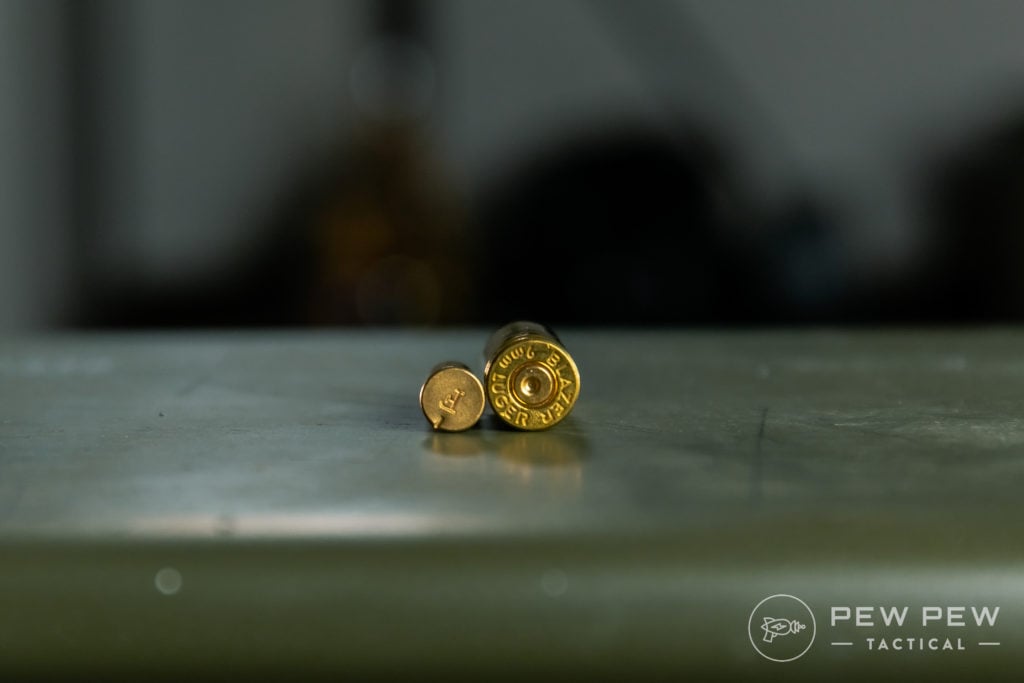
Not understanding that 100%? We’ll walk you through it in detail.

First…how does a bullet work?
Table of Contents
Loading...
Parts of a Cartridge
A standard cartridge, or round, consists of four parts — the bullet, propellant, primer, and a case.

Keep in mind a “bullet” means just the projectile, not the entire cartridge. These components are all present regardless of whether a round is a rimfire or centerfire.
In the grand scheme of things, all bullets work the same…the firing pin of the gun hits the primer, which creates a tiny explosion.
That tiny explosion sets off the gunpowder, which forces the bullet itself forward and out of your gun through the barrel.
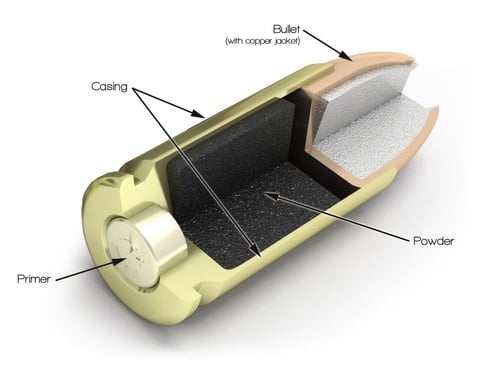
(We got more details on this in How a Gun Works.)
The difference between the rimfire and the centerfire is where that primer is located.
Centerfire vs. Rimfire Appearance
The easiest way to tell them apart is to see if you can see a circular primer in the center at the base of the casing.
*Gasp*
The primer in the center = centerfire!
If you see a smaller cartridge with no overt primer, it is likely rimfire.
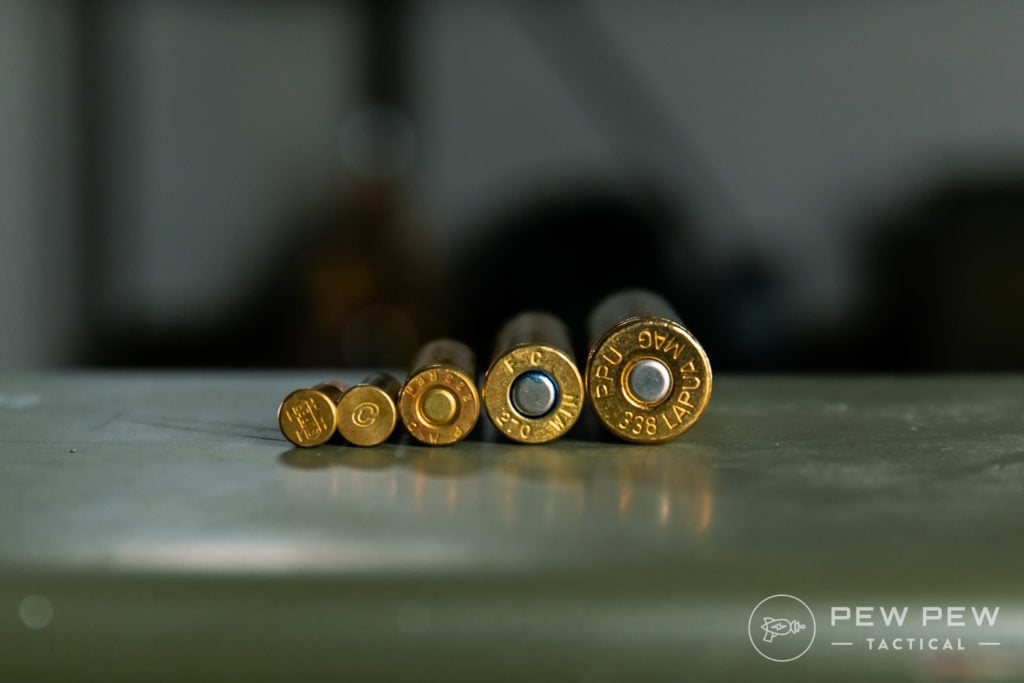
Different Ignition Systems
You can see that the names really make sense when you look at the ignition systems.
Rimfire ammo gets its name from the firing pin striking the “rim” of the cartridge to ignite the primer. While centerfire ammo is where the firing pin strikes the primer that is located at the “center” of the cartridge base.
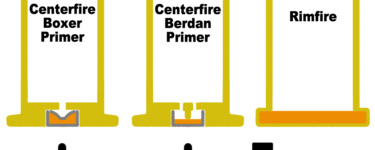
You can see the firing pin marks on the spent brass above. Again, centerfire hits the center primer while rimfire hits the rim.

Common Types of Rimfire Ammo
Rimfire ammo is limited to smaller calibers since the cartridge walls need to be thin enough to be able to be crushed by the firing pin and ignite the primer.
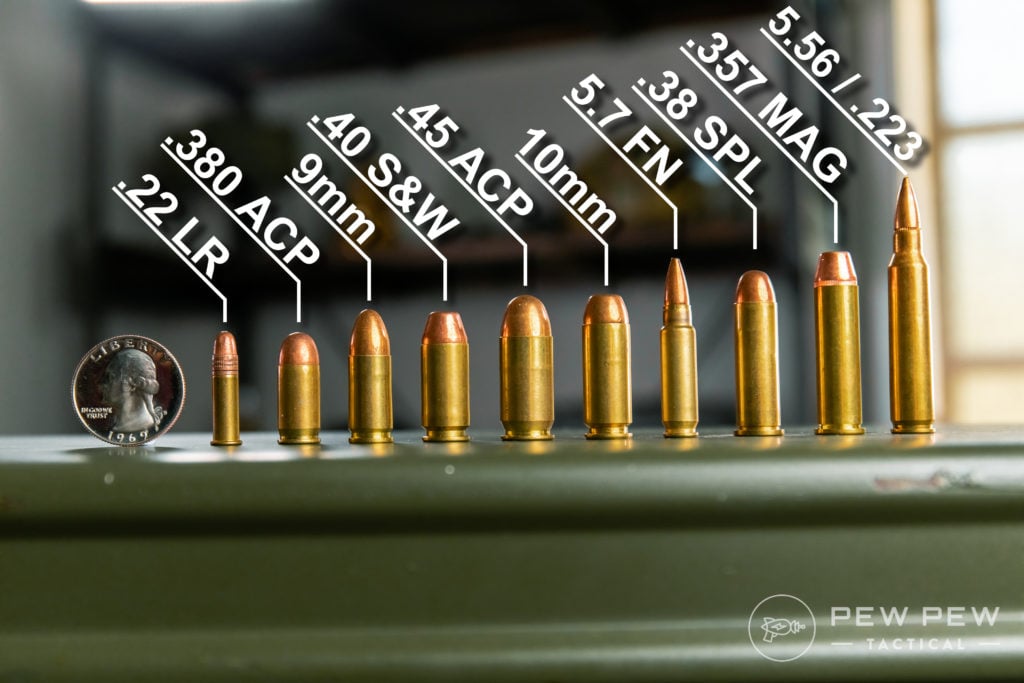
The downside?
Well, the nature of the casing means it’s pretty much limited to small calibers. You have to have some relatively flimsy brass to handle the rimfire setup. As a result, the powder necessary to propel a larger bullet would blow the brass apart.
The most common type is the .22 LR (long rifle).
.22 LR Ammo In Stock
Check out our Best .22 LR Ammo for Accuracy, Plinking & Hunting guide.
- .22 Short: Used in some revolvers, not too popular.
- .22 Long Rifle (LR): Most popular round in the world and the starting point for many shooters.
- .22 WMR: Winchester Magnum Rimfire. Used to hunt vermin and is between the .22 LR and the .223 centerfire round.
- .17 HM2: Hornady Mach 2: Higher power than the .22 LR but smaller. Didn’t really take off. The smaller brother of the HMR.
- .17 HMR: Hornady Magnum Rimfire. Newer round that is flatter shooting and more powerful than the .22 LR

Pros of Rimfire Ammo
Cheap
.22 LR can be found for 5 to 10 cents, while the AR-15 .223 round is between 25 to 40 cents each.
It is so cheap since it is easier to manufacture a thin-walled case with a flattened primer at the bottom.
5.56 and .223 Ammo in Stock
The downside?
Well, the nature of the casing means it’s pretty much limited to small calibers. You have to have some relatively flimsy brass to handle the rimfire setup.
As a result, the powder necessary to propel a larger bullet would blow the brass apart. However, there has been some hoarding in the last few years, which makes it a little difficult to find in stores and online.
Low Recoil
The .17 and .22 caliber bullets and a small amount of gunpowder make for extremely low-recoiling firearms. Perfect for the beginner or for training.
Cons of Rimfire Ammo
Not Reloadable
The primer is inside the bottom of the case and so cannot be reloaded like centerfire rounds. But rimfire ammo is so cheap comparatively that it doesn’t matter.
Reliability Issues
Even with top-shelf ammo like CCI, I still manage to get 1 to 2% failures to fire (FTF) in my 10/22 rifle.

This is because, in manufacturing, the primer compound is “spun” at the bottom of the casing and sometimes does not make full contact with the entire rim.
Rimfire is great for range plinking and varmint hunting, but I would not trust it for personal defense.
Small Calibers
Again, because of its design, rimfire is stuck with small calibers. There are some exotic larger caliber rimfires out there, but they are very rare.
Recommended Ammo
Looking for some centerfire or rimfire ammo? Check out our Best .22 LR Ammo for Accuracy, Plinking & Hunting…or our exhaustive Ammo & Reloading guides.

What do you like best, centerfire or rimfire? Let us know in the comments! Want to read more on ammo? Check out our look at Brass vs. Steel.
The post [Beginner’s Guide]: Rimfire vs Centerfire Ammunition appeared first on Pew Pew Tactical.